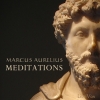
In a world that often seems teetering on the edge of disorder, where distractions abound and inner peace seems elusive, the ancient philosophy of Stoicism offers a beacon of hope. Born in the tumultuous streets of Athens and refined amid the grandeur of Roman imperium, Stoicism is a philosophy of resilience, purpose, and contentment. As we navigate the modern age, it’s extraordinary how these ancient teachings can provide us with a framework on living and leading a life of tranquility.
I stumbled upon Stoicism during a period of difficulty in my life, a journey that you and many others likely have also found themselves on. We search and yearn for a comforting philosophy or set of principles that provide us with clarity on how to navigate these tumultuous times with a strong mindset and perspective. For many, that becomes Stoicism. In this article, we will cover the Beginner’s Guide to Stoicism.
The Roots of Stoicism
Stoicism emerged in the Hellenistic period, an era characterized by a rich exchange of ideas and a hunger for knowledge that transcended territorial boundaries. Founded by Zeno of Citium in the early 3rd century BCE, Stoicism found fertile ground in the heart of Athens’ storied Stoa Poikile, or Painted Porch. From this iconic location, Stoicism drew its name and began its transformative journey.
Zeno’s teachings, further developed by the likes of Cleanthes, Chrysippus, and later Roman Stoics such as Seneca, Epictetus, and Marcus Aurelius, coalesced around a few core tenets. These principles sought to provide individuals with the tools to lead virtuous lives, to be immune to the vicissitudes of fate, and to find contentment irrespective of external circumstances.
The Core Principles of Stoicism
To understand Stoicism, it’s crucial to grasp its foundational concepts:
- Nature and Reason: At its heart, Stoicism posits that the universe is rational and governed by a divine, organizing principle, often referred to as the Logos. Humans, being part of this universe, have a fragment of this divine reason within them. By living in accordance with our nature — that is, rationally — we align ourselves with the universe, leading to a harmonious existence.
- Dichotomy of Control: Epictetus, one of Stoicism’s most revered teachers, proclaimed, “Some things are up to us, and some things are not up to us.” Recognizing this dichotomy of control allows us to focus our energies where they matter most. Things external to us — wealth, reputation, and even our health to a certain extent — are not entirely within our control and thus should not be the source of our contentment or distress. Our judgments, desires, and actions, however, are within our realm of control. Cultivating them with virtue and wisdom ensures tranquility.
- Virtue is the Only Good: In Stoicism, virtue is the sole good, and vice is the only true evil. External things, whether perceived as positive or negative, are indifferent in the grand scheme of life. A Stoic strives for wisdom, courage, justice, and temperance, understanding that these virtues are the path to a fulfilling life.
- Emotions and Judgments: Rather than being slaves to our emotions, Stoics believe that our distress arises from our judgments about things, not the things themselves. By refining our judgments and perceptions, we can maintain equanimity even in the face of adversity.
Stoicism and the Modern World
One might wonder, why does a philosophy crafted millennia ago hold relevance in our digital age? The answer lies in the timeless nature of human experience. Despite our technological leaps and the comforts of modernity, the human soul still grapples with the same fundamental questions. We seek purpose, yearn for genuine relationships, and strive to navigate challenges with grace.
Modern life, with its relentless pace and ceaseless demands, often leaves individuals feeling adrift, overwhelmed by the tyranny of immediacy. Stoicism, with its emphasis on inner fortitude and focus on what truly matters, offers an antidote to this existential malaise.
Incorporating Stoicism into Daily Life
For those intrigued by Stoicism’s promises, the journey begins with self-reflection. Journaling, a practice I found invaluable, allows one to confront their thoughts, dissecting irrational fears and reinforcing Stoic principles.
Embracing challenges as opportunities for growth and practicing gratitude for the present moment fosters resilience. By periodically engaging in voluntary discomfort — be it fasting, exposure to the cold, or any other controlled adversity — one prepares for life’s inevitable hardships.
Moreover, in our interconnected age, the Stoic practice of viewing all humans as part of a larger, cosmopolitan city is more pertinent than ever. By recognizing the shared spark of the divine in each individual, we foster empathy, diminish prejudices, and build bridges in an often fragmented world.
Other Key Aspects of Stoicism
The Stoic Sage: An Aspirational Ideal
In Stoic thought, the concept of the Stoic Sage represents the pinnacle of human virtue and wisdom. This paragon of Stoic philosophy has achieved perfect rationality, living in complete accord with nature. While the Stoic Sage is an idealized figure that even great Stoic thinkers admitted was rare, if not impossible, to achieve, this model serves as a guiding star, a standard to aspire to in one’s journey of self-improvement and alignment with Stoic principles.
Preferred Indifferences: Navigating Life’s Choices
While Stoicism underscores the indifferent nature of externalities concerning their moral value, it acknowledges that some things are naturally ‘preferred’ to others. For instance, health is naturally preferred to illness, and wealth over poverty. It’s essential, however, to remember that these preferred indifferences are not intrinsically ‘good.’ Their value is subordinate to the paramount significance of virtue. Stoics maintain that pursuing these preferred indifferents should never compromise one’s moral integrity.
Stoic Exercises: Tools for Everyday Resilience
Stoicism isn’t just a theoretical philosophy; it offers practical tools for everyday living, such as the following:
- Negative Visualization: This technique involves periodically and deliberately contemplating the loss of something or someone we cherish or imagining potential hardships. Such reflection not only fosters gratitude for what we have but also prepares us mentally for life’s inevitable challenges.
- The View from Above: By imagining oneself looking down upon the Earth from a great height, we gain a cosmic perspective, realizing the transitory nature of our problems and the interconnectedness of humanity.
These stoic exercises, among others, empower individuals to internalize Stoic teachings, ensuring a life of greater tranquility and purpose.
Prominent Texts and Further Readings
For those eager to immerse themselves deeper into Stoic thought, several foundational texts illuminate the way:
- Epictetus’ “Enchiridion” provides concise wisdom on how to lead a Stoic life.
- Seneca’s “Letters from a Stoic” offers profound insights through his correspondence, revealing the practical applications of Stoicism.
- Aurelius’ “Meditations” serve as a personal diary, reflecting the application of Stoic principles amidst the challenges of ruling an empire.
Contemporary interpretations and adaptations of Stoic philosophy have also emerged, making the ancient wisdom accessible and relatable to the modern reader.
Conclusion
No philosophy is without its critiques, and Stoicism is no exception. Some argue that its emphasis on emotional restraint can be misconstrued as suppression, potentially hindering genuine human connection. Others believe its focus on accepting fate might deter proactive action. However, true Stoicism promotes understanding and managing emotions, not suppressing them, and encourages proactive virtue-driven action within the confines of what’s within our control. If you’re interested in learning more about Stoicism, then please head over to our database of Stoic content.











Loved the article. Explains in a way that is easy to understand for a beginner. Congrats to the publisher. Hope to see more of your work.
Thank you very much Jorge, we’re glad you enjoyed it!